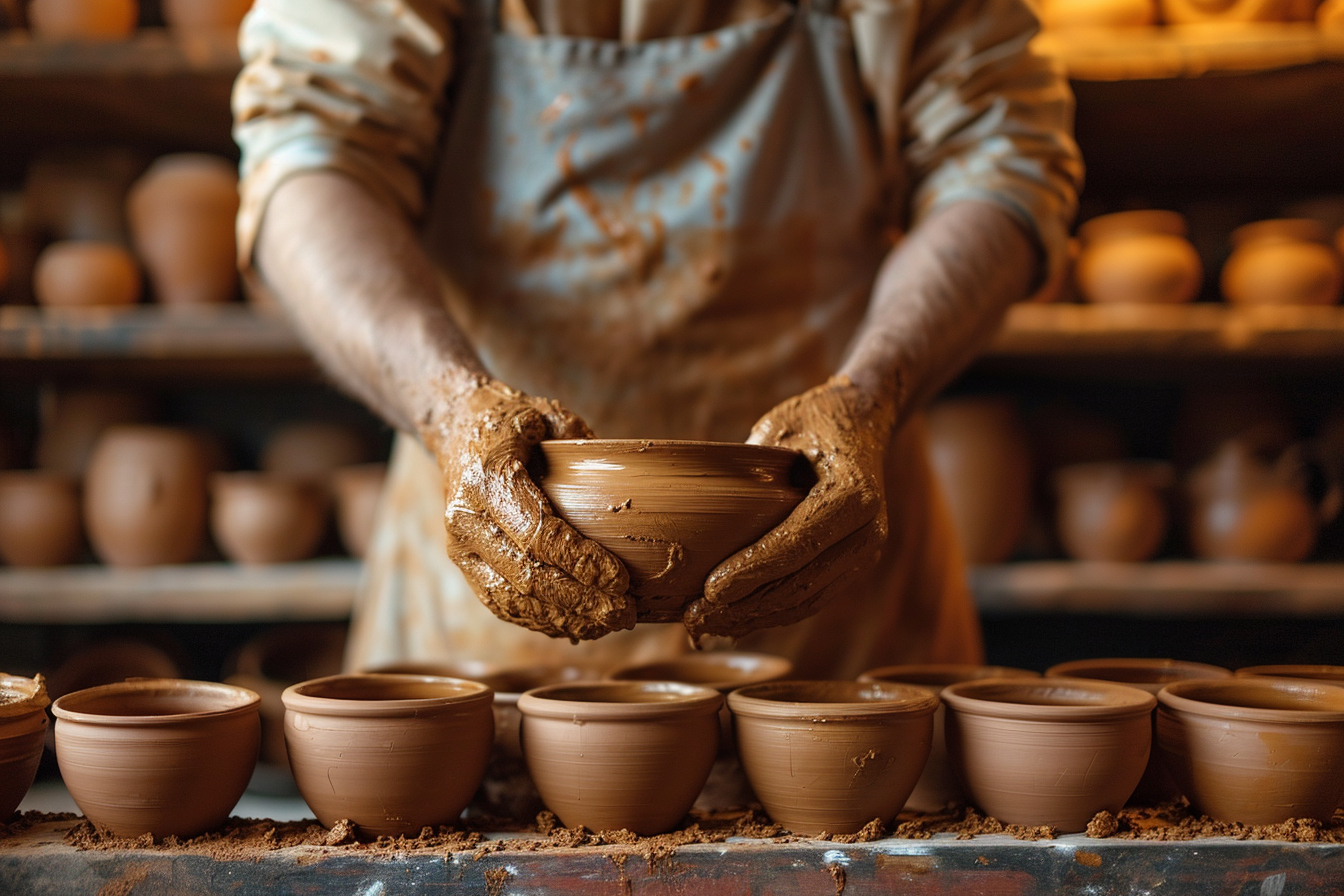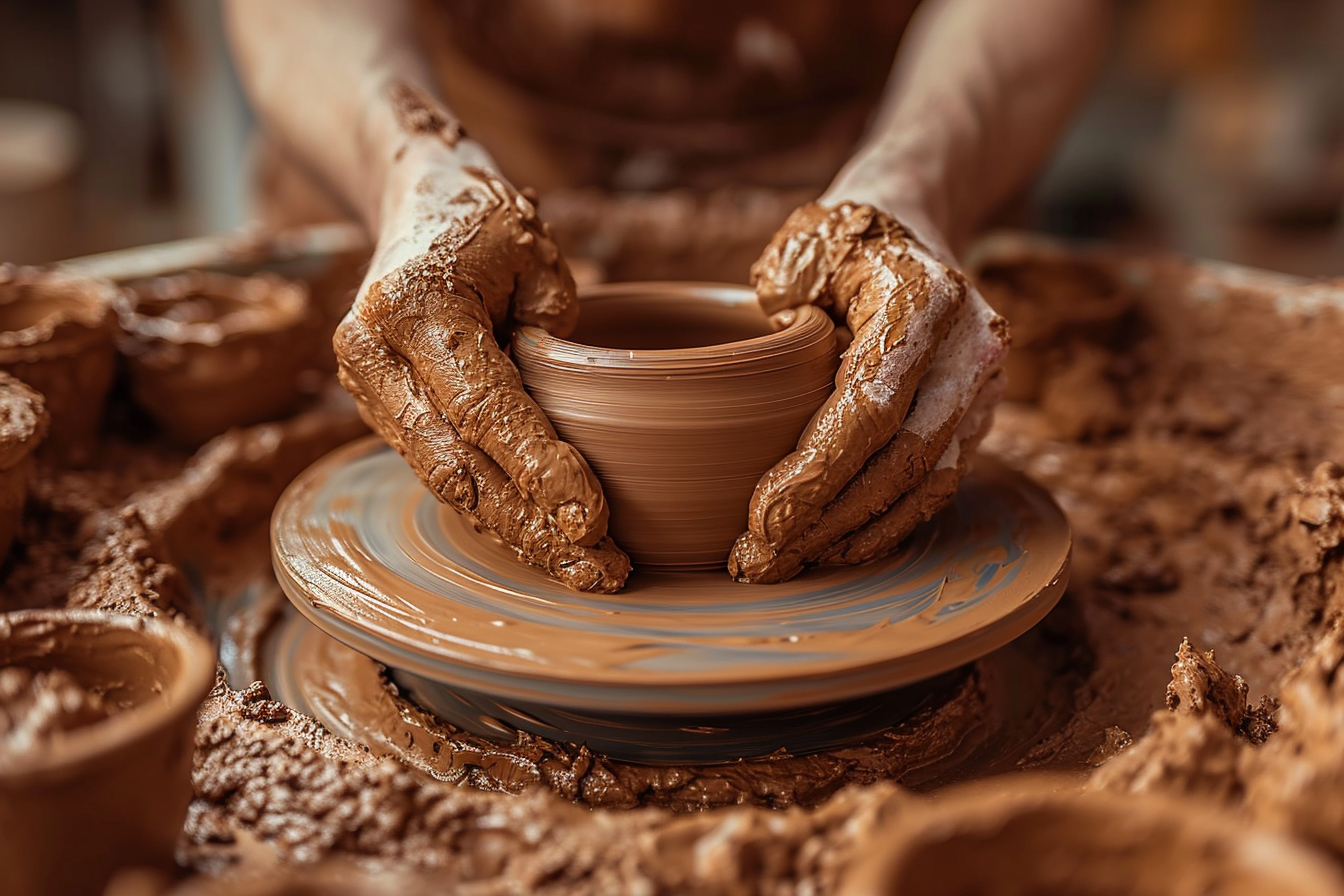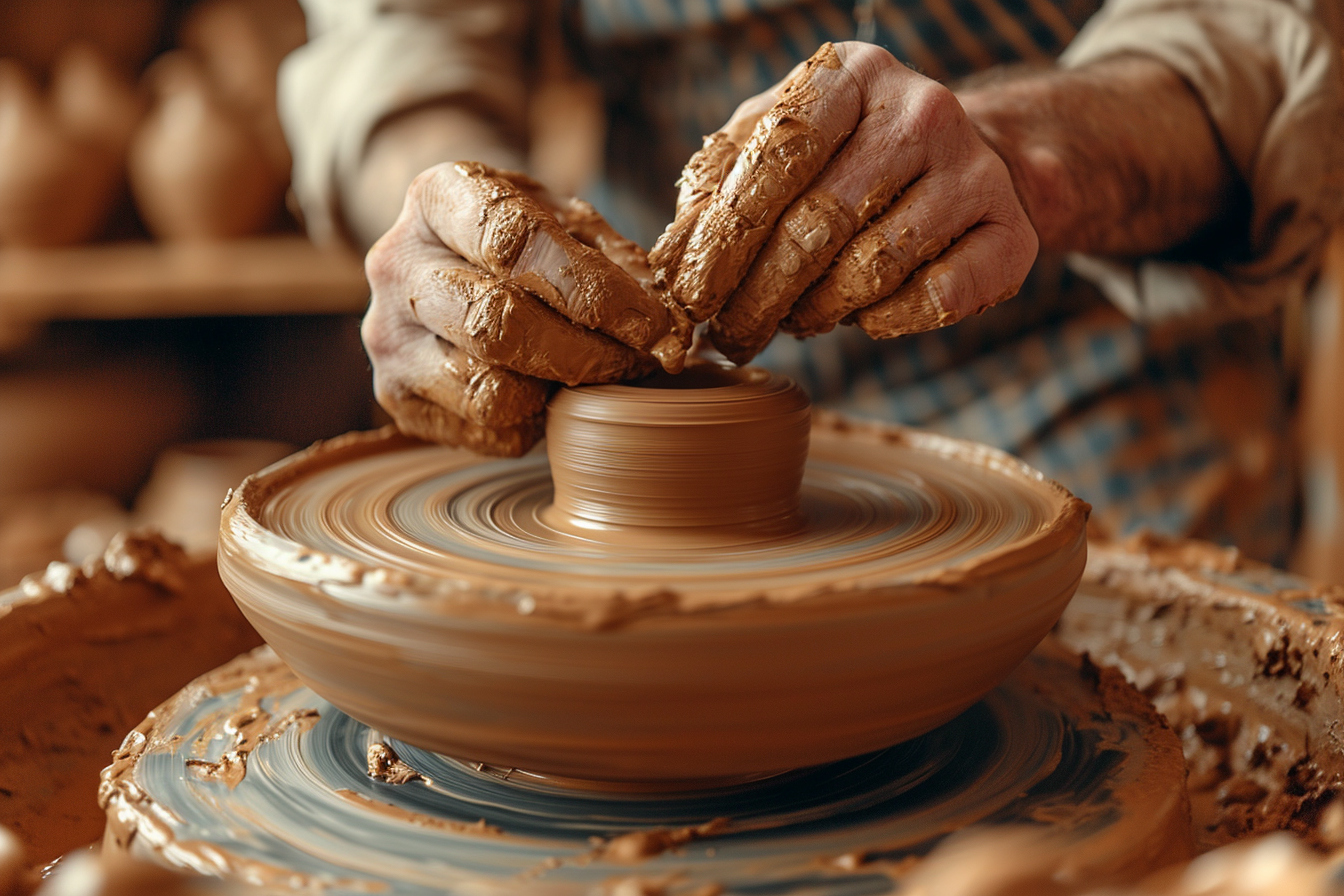The art of modeling clay, which dates back thousands of years, is a fascinating form of creative expression. The art of filming Pottery is a skill that combines form, function and beauty, allowing the artist to create unique objects. Whether you are a beginner or already passionate about pottery, understanding the basics and perfecting your technique will always remain at the heart of your journey.
Choice of equipment and materials
The potter’s wheel
One of the essential elements in pottery is the wheel. Manual or electric, the choice of lathe will depend on your personal preference and budget. Electric models offer more controllable speed and consistency, while manual tricks require more of the sense of touch and physical coordination.
Types of clay
Several types of clay are available to potters:
- Stoneware clay : very versatile, ideal for beginners.
- Porcelain : delicate and refined, it requires a more advanced technique.
- Red clay or earthenware : popular for its traditional appearance and low temperature cooking.
Other essential tools
- Modeling tools : the peepers, the estèques, and the roughing trees which allow you to shape and finish the works.
- Sponges and ribbons : essential for smoothing and moistening clay.
- The thread to cut : to detach the pottery from the wheel.
Preparing the clay

Before use, the clay must be well prepared. This phase, called kneading, is crucial to eliminate air bubbles and homogenize the material. Proper preparation helps prevent cracks or explosions during cooking.
Basic filming techniques
Centering the clay
Centering is the first step in turning. Firmly position the clay ball in the middle of the round and start turning it. Using your palms and fingers, apply even pressure so that the clay takes a stable, centered shape.
Opening and elevation
Once centered, create a well in the center of the clay ball with your fingers or thumbs. Carefully widen the opening then pull the clay upwards to form the walls of your object.
Forming and finishing
By varying the pressure of your hands and using your tools, give your piece the desired shape. The delicate use of the sponge helps to smooth surfaces and correct imperfections.
Drying and cooking

drying
After filming, comes drying. Pottery pieces should dry slowly to avoid cracking. Drying is done in two stages: air drying, until the object takes on the consistency of hard leather, and complete drying, which makes the object ready to be cooked.
Bisque cooking
The first cooking, called biscuit, transforms your part into a hard but still porous object. This step is generally carried out between 900 and 1000°C, depending on the clay used.
Glazing and second firing
Glazing provides a vitrified finish to your pottery. After application of the enamel, the second firing, often at a higher temperature, allows the surface of the object to be vitrified.
Decoration and finishes
Decoration techniques are almost infinite. Engobe, sgraffito, or even wax decoration, bring your room to life and reflect your personal style. Mastering these techniques brings character and depth to your creations.
Tips for Beginners
- Start simple : Before aiming for complex shapes, master the basic shapes.
- Regular practice : Pottery requires patience and repeated practice.
- Learn from others : join a community of potters, take online courses or tutorials to observe various techniques.
Common mistakes to avoid
- Forgetting to compress the bottom : after opening the clay, it is essential to compress the bottom to prevent it from cracking.
- Excessive lap speed : rotating too quickly can destabilize your part.
- Drying too quickly : this can lead to cracking or deformation of the work.
Advanced practice for enthusiasts
turning
Turning is a finishing process where excess clay is removed from a semi-hardened piece to refine its shape and weight. This step requires delicacy and precision.
Assembly of complex parts
Creating complex parts requires dividing the object into several parts before assembling them. This method allows for more ambitious works.
Advanced decorating techniques
Techniques such as engraving, adding relief elements or enamel painting offer unlimited possibilities for personalizing your creations.
Perspectives and development of one’s own path
Pottery, beyond a manual activity, is a path of self-discovery. Express your sensitivity through earth and clay and leave your unique signature on each artifact. Small or large, utilitarian or decorative, your creations reflect your artistic vision.
There mastery of the art of filming requires time and dedication. Each step, from the choice of clay to the delicate finishes, brings learning and personal satisfaction. With your hands immersed in clay, let your talent blossom and share it with the world.
The journey to excellence in pottery is long and full of enriching experiences. Take pleasure in each turn, in each lift, and make it a unique medium of expression. Surrender to the beauty of the process and see where your creativity takes you.












